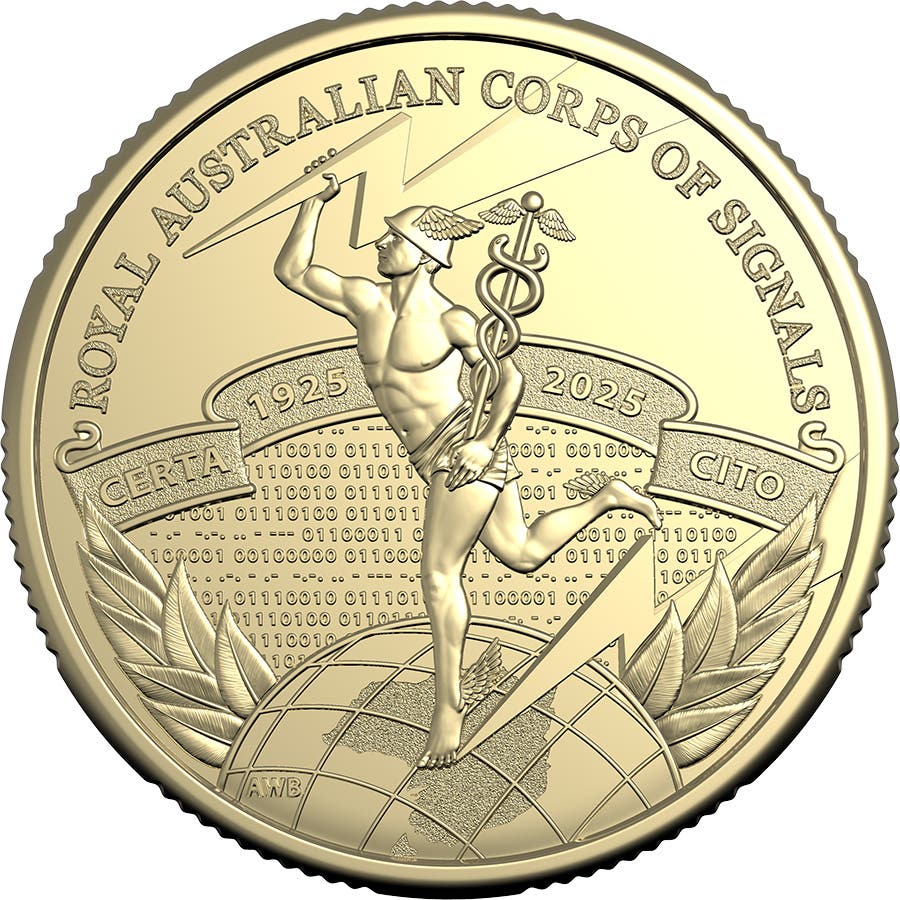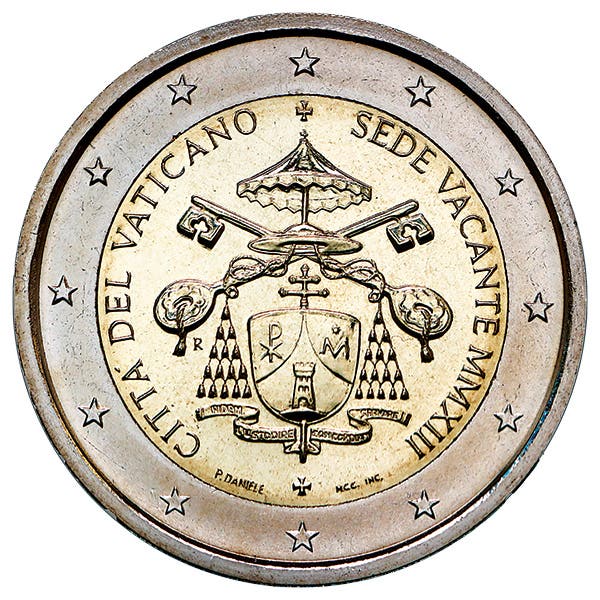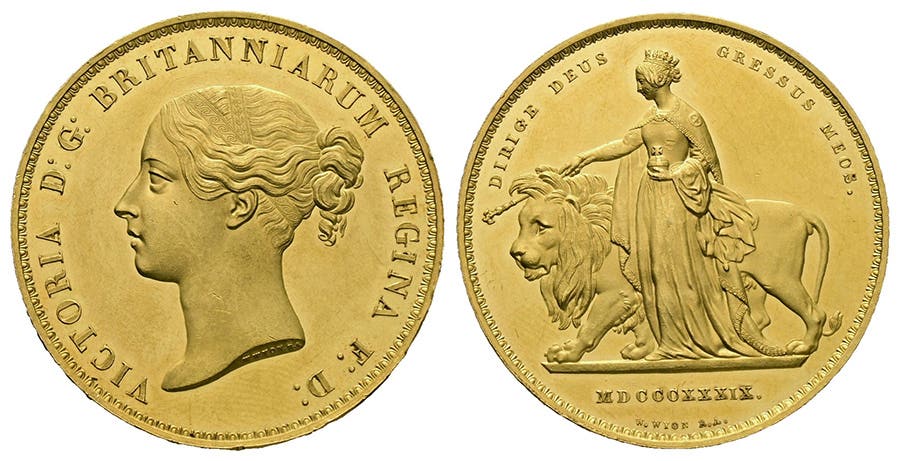The “Gold”-en Century
How gold revolutionized global trade 100 years ago, shaped national symbols, created economic stability, and stirred up significant trouble.
Too young. Too individual. Too romantic. These scathing critiques were not about the next superstar in a talent show in 2025 but about a numismatic representative for Switzerland in May 1895. Twelve years earlier, Switzerland had introduced its first federal gold coin featuring the female personification of the country, "Helvetia," designed by Neuchâtel-based medalist Fritz Ulisse Landry. However, the government in Bern believed that she needed a makeover, and this endeavor ultimately ended in scandal.
What Landry presented to the jury was a step too daring; he had modeled the coin after a young woman. The unique design of the youthful woman's face was meant to symbolize his vision of freedom. However, the jury didn't fall in love at first sight. They demanded that Landry make the features of the new "Helvetia" appear more maternal, and the mountainous backdrop also needed to be less conspicuous.
Landry complied with the demands and submitted a revised design. He gave the young woman more mature facial features and tamed her hair with a braid. This version aligned better with the jury’s expectations, and they recommended the updated design to the Swiss Federal Council for production. However, two years later, Landry had to make further changes. A concerned magistrate objected to the first trial strikes, claiming that a single curl on the forehead gave the figure a frivolous appearance. This, they said, jeopardized the dignity of the Swiss Confederation. Consequently, the curl was removed, clearing the way for "Helvetia" to become a numismatic legend.
With a gross weight of 6.452 grams, a purity of 90%, and a fine gold content of 5.807 grams, the successor to the "Helvetia" (minted from 1883 to 1896) is one of the most famous gold coins in the world—and among the most widely minted. The redesigned "Vreneli" (a diminutive of Verena) was struck from 1897 to 1949, with a total mintage of around 58 million coins. Annual mintages range from as low as 50,000 coins (1926) to an astonishing 20 million coins (1935). Additionally, there are variants with denominations of 10 francs, minted only between 1911 and 1922, and a 100-franc version, which is extremely rare and valuable due to a mintage of just 5,000 pieces in 1925.
The "Vreneli" appeals equally to collectors and investors, as it ranks among the most affordable coins in its weight class and is a staple in any well-stocked precious metal or coin dealer's inventory. It is considered a circulating, historical trade coin partially or fully backed by its precious metal content. Thanks to its widely varying mintages and production costs covered long ago, it's an economical coin for every budget. Additionally, storage is remarkably simple—many investors stash them in boxes or sacks.
The "Sovereign": The Mother of All Gold Investment Coins
Switzerland, with its "Helvetia" and later the "Vreneli," was a latecomer to gold coinage. Many other gold coins were introduced much earlier, but none boast a longer tradition than the British "Sovereign." Since 1817, the "Sovereign" has been minted with current specifications: a diameter of 22.05 millimeters, a thickness of 1.52 millimeters, and a weight of 7.98 grams. However, the 200th anniversary of the "Sovereign" celebrated by the Royal Mint in 2017 with special editions belies its much older origins: the coin's beginnings can be traced to 1489 when Henry VII, the founder of the Tudor dynasty, first issued a gold coin called the "Sovereign."
Its consistent design has made it one of the most recognizable coins in Britain, familiar to young and old alike. The reverse features the iconic image of St. George slaying the dragon, a design by Italian engraver Benedetto Pistrucci that remains in use today. Its denomination and weight have been adjusted multiple times, and only the obverse, depicting the reigning British monarch, has changed over time. Since 1817, every British ruler has appeared on the "Sovereign," and in earlier periods, the coin featured a who's who of British royalty. This aspect makes the "Sovereign" particularly exciting for collectors; it features five portraits of Queen Elizabeth II, three depictions of the legendary Queen Victoria ("Young Head," "Jubilee Coinage," and "Old Head"), and six other British kings.
Once a trade coin widely used in everyday transactions across much of the world, the "Sovereign" is closely tied to Britain's rise as a global trading power. At various points in history, the coin was also minted in British crown colonies, with examples originating from Australia, Canada, South Africa, and India. The "Sovereign" has been in regular production again since 1957, following a hiatus after World War II. Despite its historical and artistic value, the "Sovereign" is often traded close to its intrinsic gold value.
The Royal Mint is closing and opening a new chapter in the "Sovereign's" history this year with the final production of the coin in its rose gold alloy, setting the stage for yet another milestone in its long and storied legacy.
A Precursor to the Euro: Gold as a Common Denominator
Paris, France, 1870: A bustling afternoon on Quai des Orfèvres. As merchants call out their wares, the air is filled with the scent of fresh baguettes and roasted coffee. Monsieur Dupont, a wealthy French merchant, enters an elegant fashion boutique to purchase a new dress for his wife. He selects a silk gown and heads to the counter. Smiling, he pulls a gleaming gold coin from his pocket—a Belgian 20 franc "Napoleon." The cashier examines the coin briefly and nods in approval. For Monsieur Dupont, it's natural for the coin to be accepted; after all, Belgium and France are both members of the Latin Monetary Union.
Milan, Italy, 1885: People throng the market stalls in the bustling streets near the Duomo. The midday sun bathes the city in light, illuminating its grand facades. Signora Lucia, an Italian farmer selling cheese and wine, has had a good day of sales. A Swiss tourist, Mr. Müller, approaches her stall and points to one of the large Parmesan cheese wheels. After agreeing on the price, Mr. Müller hands over a Swiss 20 franc gold coin. Smiling, Signora Lucia accepts the coin, confident it will be recognized across the monetary union. Thanks to the standardized weight and value of the coins, she can easily use and exchange them at her bank for the equivalent amount in Italian lire.
These two snapshots illustrate the daily realities and economic advantages brought by the Latin Monetary Union (LMU) in the 19th century. The LMU was a significant monetary alliance founded on December 23, 1865. Originally called the "Convention Monétaire" or Monetary Agreement, the name was changed in reference to the shared Latin roots of the languages spoken by its founding members.
The Union's goal was ambitious: by standardizing the weight, purity, and value of coins, trade among member countries would be significantly easier. This vision of a unified monetary system would strengthen economic ties and simplify everyday life. The LMU became a precursor to the Euro, which facilitates cross-border trade and leisure travel today.
The roots of the LMU date to the period following the Congress of Vienna in 1815. In the wake of the French Revolution, the franc was established as a currency unit, with a fixed ratio of gold to silver set at 1 to 15.5. France minted gold coins in six denominations, ranging from 5 to 100 francs. Through Napoleon's conquests, this system was extended to other regions, including parts of Italy and Switzerland. At the time, Europe was a patchwork of currencies, denominations, weights, and purities. Even within countries like Switzerland, there was no uniform standard for coinage. The LMU sought to bring order to this chaos.
The founding members of the LMU included France, Belgium, Italy, and Switzerland. Greece joined in 1868, followed by Spain in 1874 and Romania in 1889. The LMU standards were so influential that other European countries adopted them despite not holding formal membership.
In its early years, the LMU was a success. The standardization of monetary systems facilitated trade and encouraged economic integration. However, challenges soon emerged that threatened its stability. One major issue was the fluctuating valuation of gold and silver in international markets. The price of silver dropped sharply in the 1870s, leading to its overvaluation within the LMU. This triggered a surge in the minting and hoarding of silver coins, while gold coins became increasingly scarce.
To counter these developments, the LMU decided in 1878 to drastically reduce the minting of silver coins. At the same time, the gold standard was strengthened to ensure currency stability. However, these measures failed to resolve the fundamental problems of bimetallism. Economic pressures intensified, particularly on weaker member states like Greece and Italy.
Over the following decades, the Union gradually eroded. Some member countries began pursuing independent monetary policies, undermining the strict rules of the LMU. This led to tensions within and weakened its cohesion. Ultimately, these internal fractures caused the LMU to collapse.
The LMU stands as a fascinating historical experiment, showcasing both the potential and the pitfalls of a shared monetary system. While its initial success fostered economic cooperation, unresolved challenges ultimately led to its downfall—providing valuable lessons for modern monetary unions like the Eurozone.
A Gold Rush in Germany
In the mid-19th century, hundreds of thousands of adventurers embarked on arduous journeys to seek gold, but not all ventured to the Wild West. During the 19th century, gold was extracted from rivers like the Danube, Rhine, Eder, Isar, Inn, and Schwarza for coin production. These coins, known as "River Gold" ducats, featured exquisite designs and inscriptions that highlighted their origins.
The labor-intensive process of extracting gold for coinage was common in several old German territories, such as Bavaria, Hesse, and Baden, from the mid-18th to 19th centuries. The first "River Gold" ducat is believed to be a half-ducat from the Palatinate, minted in 1674, featuring the portrait of Elector Karl Ludwig. The last "River Gold" ducat was minted in Bavaria in 1863.
Inscriptions in Latin informed people about the uniqueness of these coins. For example, Bavarian gold ducats bore the words "EX AURO RHENI," meaning "from the gold of the Rhine." In the Palatinate, coins were inscribed with "SIC FULGENT LITTORA RHENI," which translates to "thus shine the banks of the Rhine." Other inscriptions, such as "DANVBII," meaning Danube, "ISARÆ" for Isar, or "OENI," as Inn, also indicated the rivers from which the gold was sourced.
For coin collectors, "River Gold" ducats are highly desirable for several reasons. Their intricate designs rank among the most beautiful European coins of past centuries, often depicting cityscapes with rivers or gods holding urns. Additionally, these coins were exceedingly rare, as extracting gold from rivers was labor-intensive, and European waterways yielded only small amounts of gold. For 19th-century rulers in German territories, minting gold coins with documented origins was a matter of prestige and a form of regional branding—similar to how the merchandise mark "Made in Germany" is recognized today.
This luxury came at a cost. Even 200 years ago, extracting gold from rivers was an expensive and complex process. Rivers in Germany were historically vital trade routes and drivers of prosperity, and major waterways like the Rhine and the Danube became hubs of human settlement and evolved into metropolises over centuries. Gold was often collected as a byproduct and purchased by local rulers, who then turned it into coins.
In the old German territories, producing river gold coins was considered a matter of state importance. A ruler who could claim to possess gold within their domain and the ability to process and mint it held a prominent position among the powers of the German-speaking world. In those days, gold and silver were among the most critical indicators of a nation's economic strength. Moreover, rulers needed this wealth to finance their armies and secure power.
A Timeless Currency
Gold coins played a central role in the 19th century, serving as both universal currency and a store of value. Many countries introduced gold coins, such as the "Sovereign" or "Helvetia," later replaced by the "Vreneli." These coins were not only symbols of national strength but also tools for fostering economic stability and international trust in cross-border trade. The reliance on gold as the financial system's foundation reflects this precious metal's central importance to the global economy, making the 1800s justifiably known as the Century of Gold.
However, the century was not without controversy and challenges. The transition from bimetallism to the gold standard created economic tensions. Gold did not always unify—it was sometimes excluded, as seen with the challenges within the LMU. Heated debates over coin designs underscored gold's emotional significance beyond its economic value.
Incidentally, over a century ago, the Swiss public could not understand their political leaders' criticism of the "Helvetia." While federal officials argued that a young girl was unfit to serve as the face of the Confederation, the Swiss people immediately embraced her. Today, it's estimated that nearly every household in Switzerland owns at least one historical gold coin, whether as an emergency reserve or a gift for a special occasion.
You may also like:








